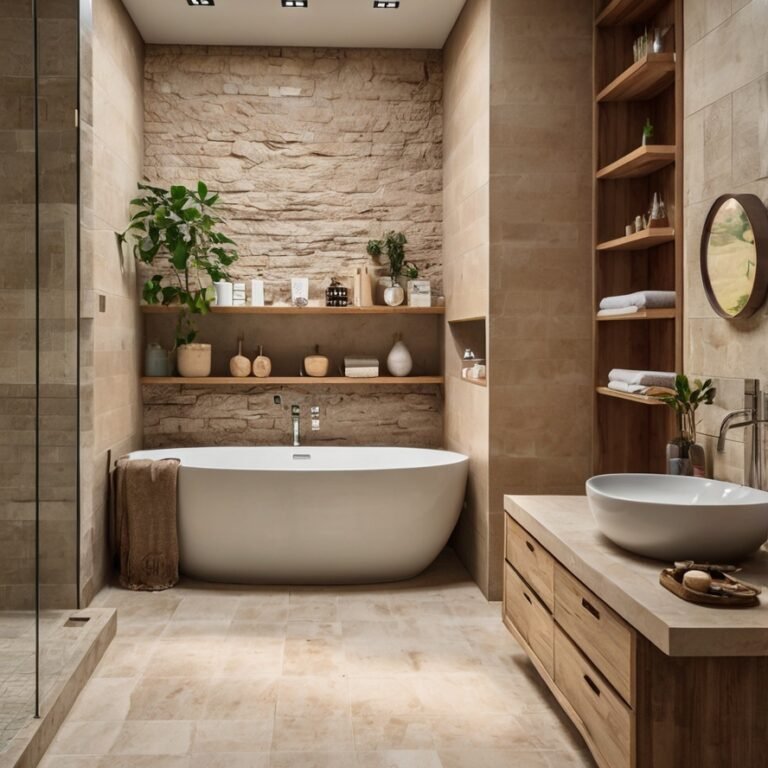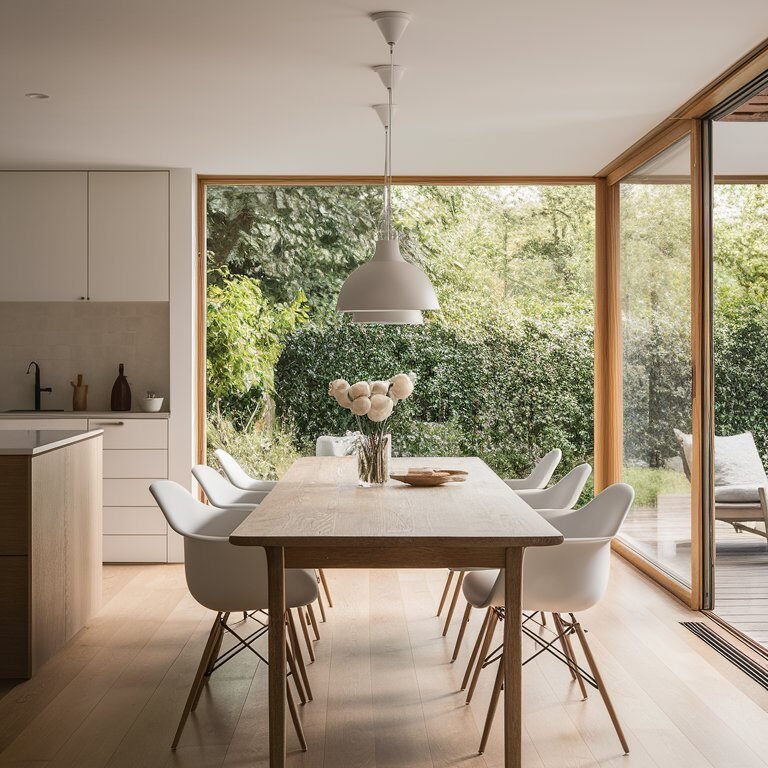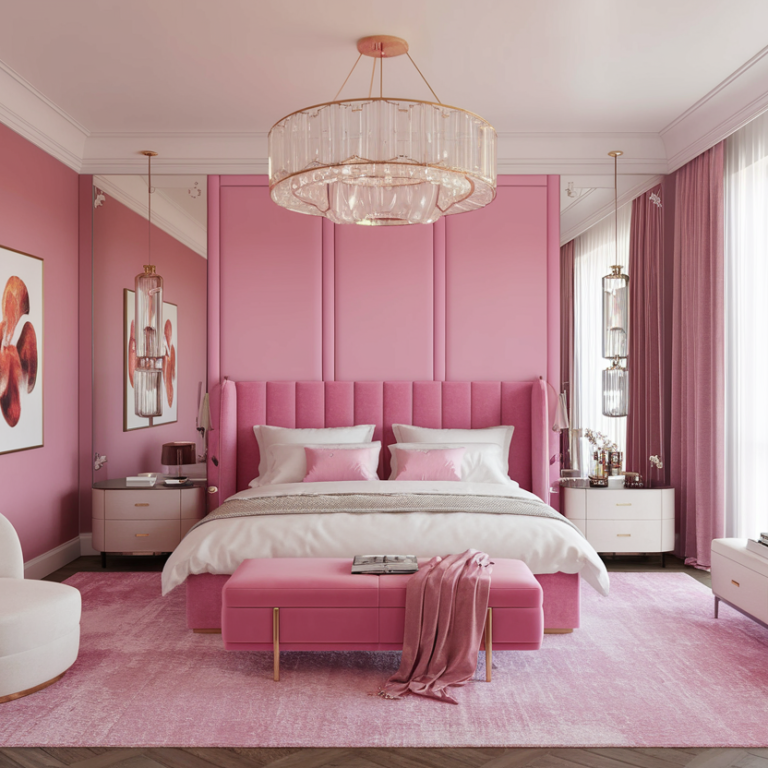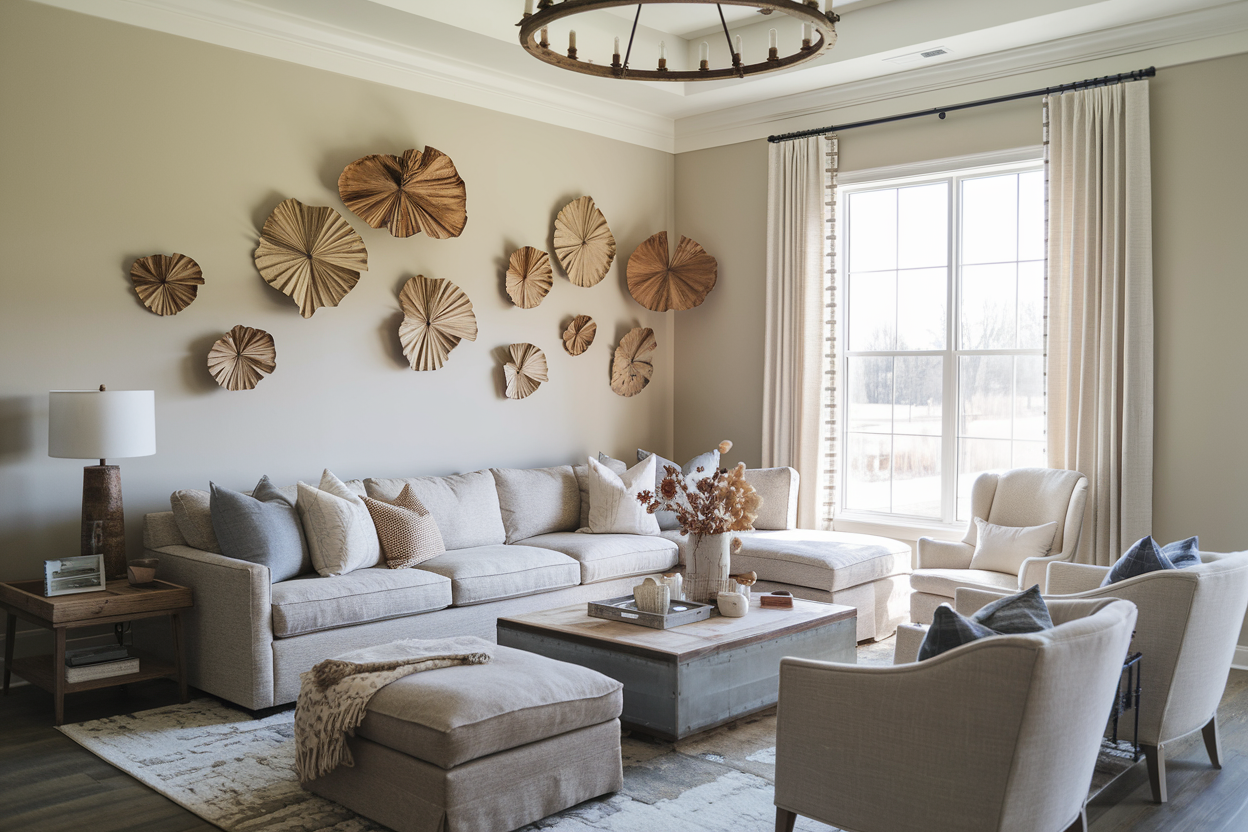
Creating a home that feels calm, grounded, and effortlessly stylish starts with embracing the beauty of modern organic design. Natural textures, soft neutrals, and clean lines come together to form a space that feels both curated and comfortable, where modern minimalism meets nature-inspired warmth. This style invites simplicity, connection, and a sense of well-being into every corner of your home.
Modern organic interiors aren’t about strict rules, they’re about thoughtful choices that reflect your lifestyle while honoring the natural world. Think handcrafted materials, cozy textiles, muted color palettes, and an overall sense of balance. These elements can breathe life into any room, offering a retreat-like atmosphere that still feels contemporary.
Discover 29 creative ways to introduce modern organic style into your home, combining sleek design with the warmth of nature. Let this collection inspire you to craft an environment that feels grounded, serene, and effortlessly beautiful.
1. Layer Natural Textures

In a modern organic home, texture is everything. It’s what brings the space to life and makes it feel welcoming rather than sterile. Layering textures means combining materials like raw wood, chunky knits, soft linen, woven seagrass, and ceramic finishes in one room to create a rich and dynamic environment. Think of a linen slipcovered sofa paired with a nubby wool throw, a jute rug underfoot, and handcrafted pottery on a raw wood coffee table. These elements work together not just to please the eye, but to invite touch, comfort, and a true sense of home.
2. Choose an Earthy & Grounding Color Palette
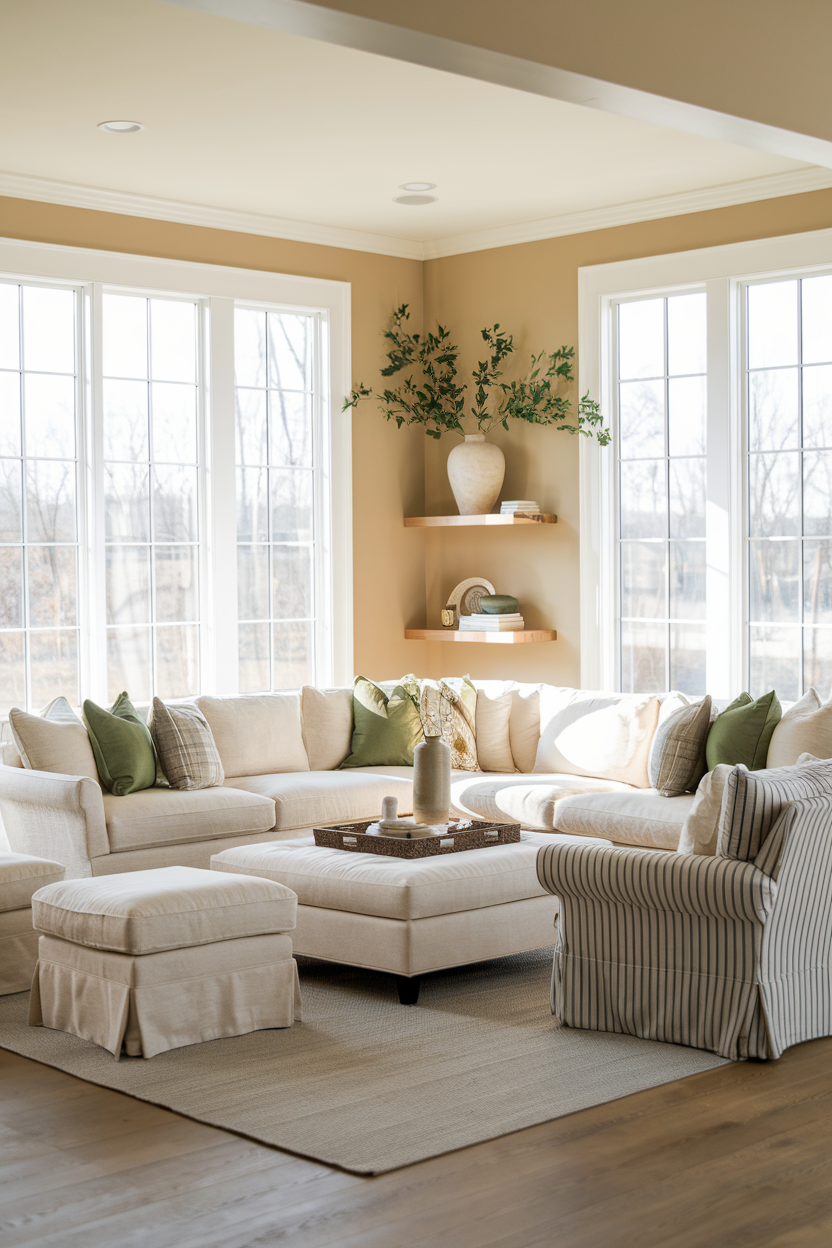
Earth tones are the foundation of modern organic decor. Instead of relying on bold hues or stark contrasts, opt for colors inspired by the natural world (soft beiges, clay reds, mossy greens, stone grays, and creamy whites). These tones don’t just complement each other effortlessly; they also promote a sense of tranquility. Imagine walls in warm putty or sand tones, accented by sage green cushions and a clay-colored vase on the shelf. This color story doesn’t scream for attention. It soothes, comforts, and grounds the entire space.
3. Incorporate Raw Wood Elements
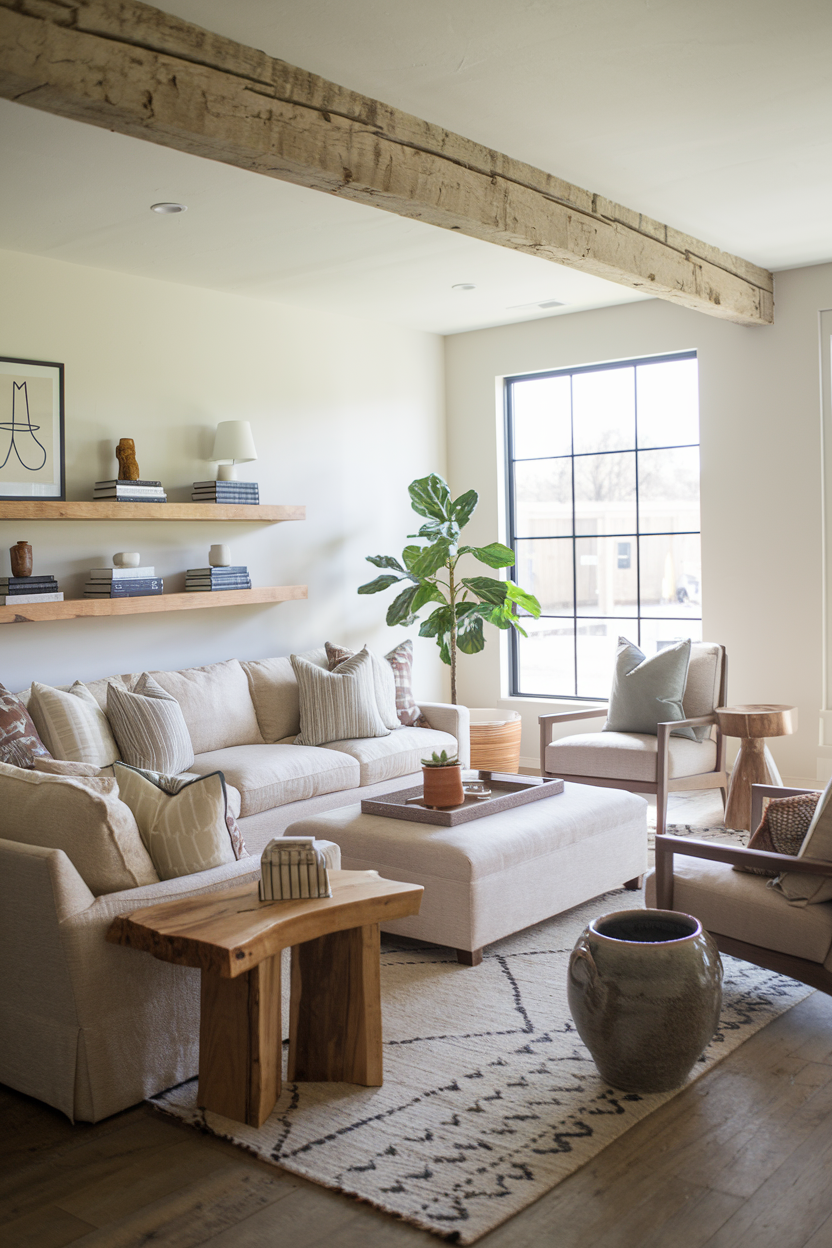
Raw, unfinished wood pieces are staples in organic design because they highlight the innate beauty of natural materials. Whether it’s a live-edge dining table, a vintage oak bench, or exposed wooden beams overhead, wood with visible grain, knots, and imperfections adds an irreplaceable sense of soul. It connects your space directly to the forest, offering warmth, texture, and a feeling that every piece has a story. Pair wood tones thoughtfully, mixing warm walnut with light ash, or pairing rustic pine with clean white walls to balance rugged charm and modern simplicity.
4. Use Natural Fiber Rugs
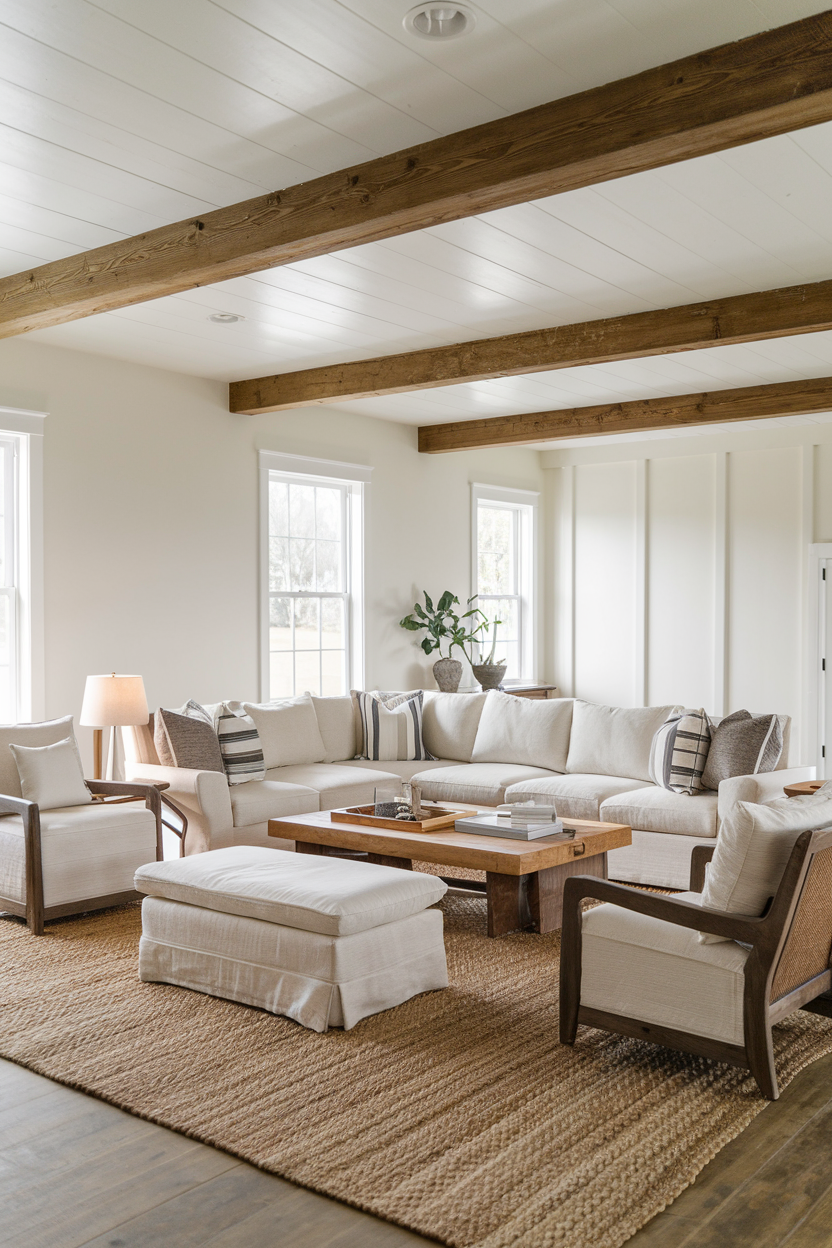
Synthetic rugs often lack the depth and tactile beauty that natural fiber rugs offer. Jute, sisal, wool, and cotton rugs are not only more environmentally friendly, they also bring a layer of organic richness that complements the simplicity of modern decor. A large woven jute rug under a neutral-toned sofa adds both visual texture and grounding comfort. Natural fibers also hold up well over time, gracefully aging and developing patina in high-traffic areas, enhancing that perfectly lived-in look modern organic homes aim for.
5. Handmade Ceramics
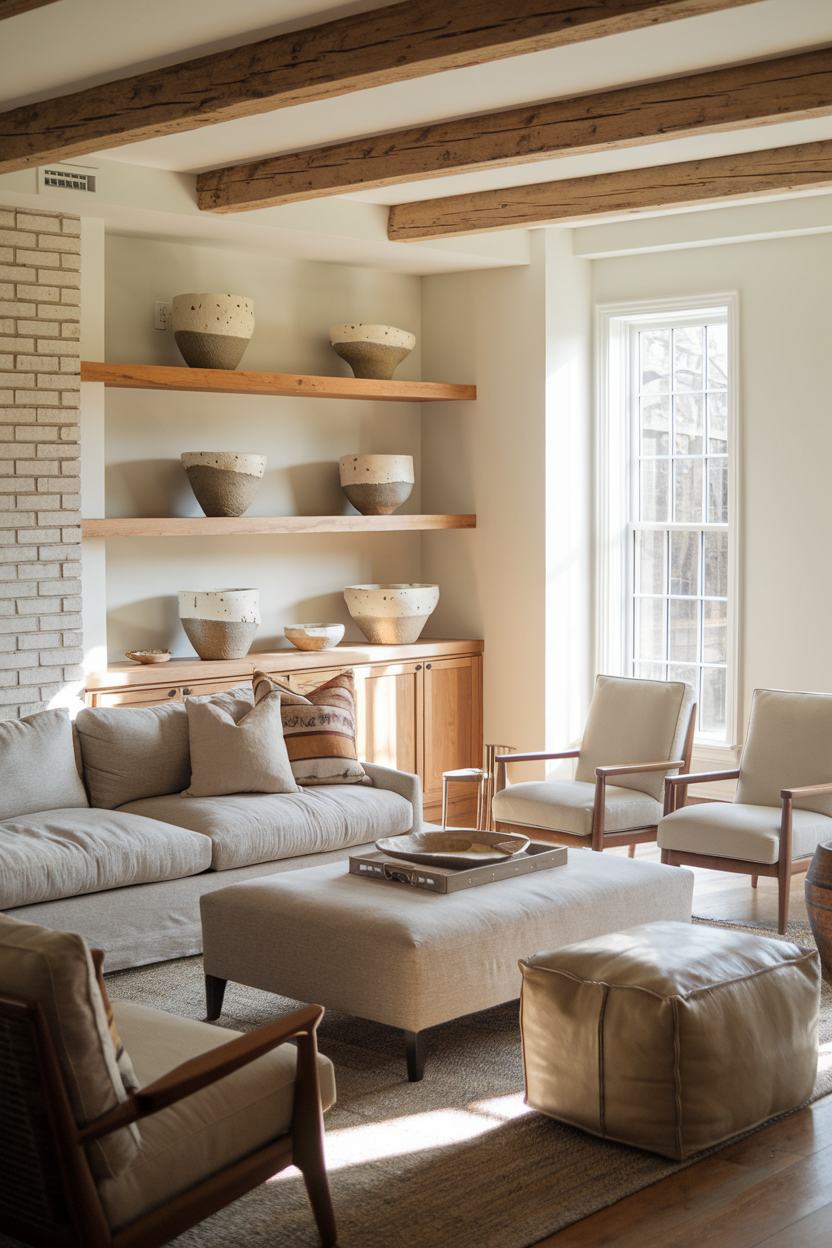
Mass-produced decor has its place, but handmade ceramics bring a human touch that elevates any space. Look for bowls, mugs, planters, and vases that show subtle signs of their creation, uneven rims, flecks in the glaze, visible finger marks, or asymmetrical shapes. These details infuse your home with personality and craftsmanship. Display them proudly on open shelves, console tables, or your kitchen counter. They don’t just hold objects, they tell a story and remind us that imperfection is beautiful.
6. Maximize Natural Light

There’s no substitute for sunlight when it comes to organic design. Natural light enhances the colors and textures in your space, bringing out the warmth of wood and the softness of fabrics. Keep window treatments light and airy. Opt for sheer linen curtains or simple blinds that can be pulled up entirely. Mirrors can help reflect light into darker corners, while skylights or large windows can transform even the most minimal space into something ethereal and alive. Letting light flood in allows your interiors to breathe and evolve with the rhythm of the day.
7. Choose Upholstery in Natural Fabrics
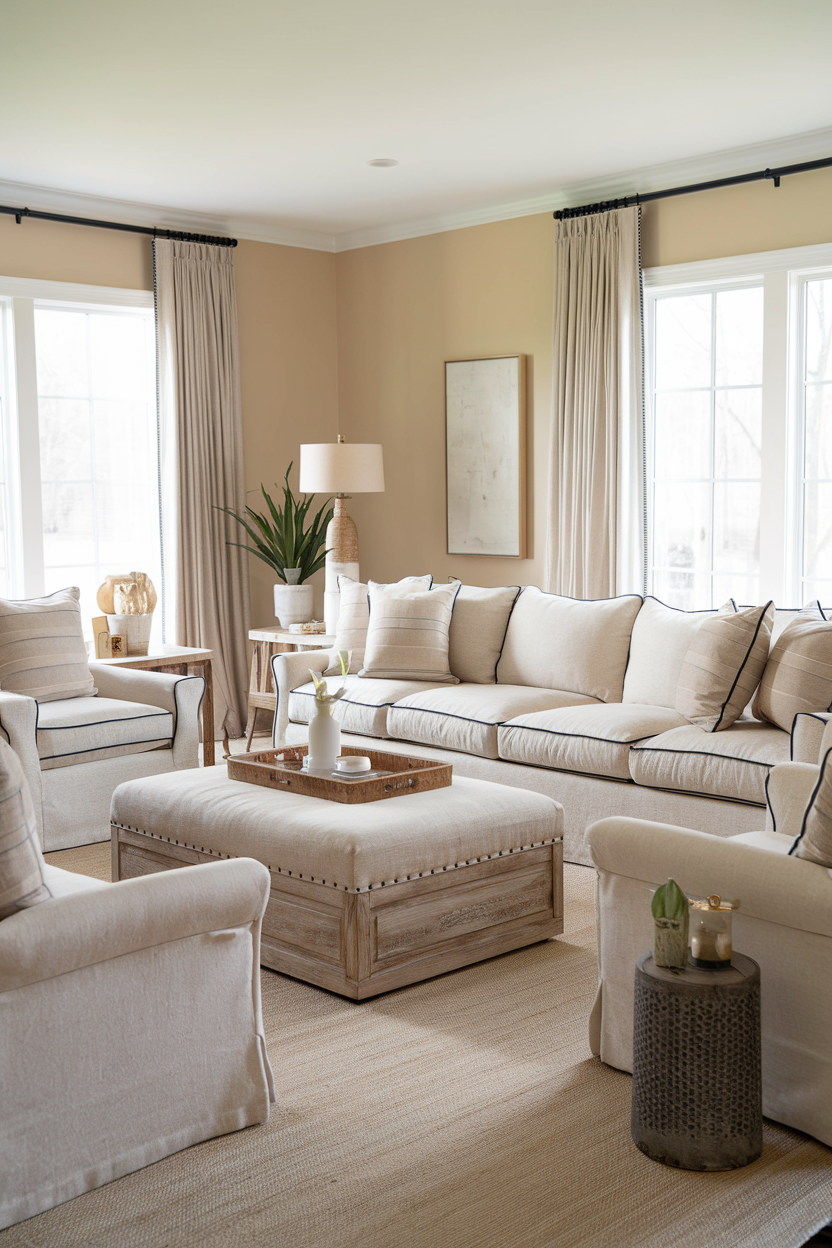
When selecting sofas, chairs, or even accent cushions, prioritize upholstery made from natural, breathable materials like linen, cotton, hemp, or wool. These fabrics not only feel better against your skin, but they also age more gracefully, developing character and softening over time. A linen-upholstered sofa, for instance, might wrinkle slightly, but those wrinkles add charm and a relaxed sophistication that fits seamlessly into an organic space. Plus, many of these fabrics are more sustainable and hypoallergenic, contributing to a healthier and more mindful home environment.
8. Add Stone

Stone, like wood, brings the grounding energy of nature indoors. Incorporating marble, limestone, travertine, or soapstone into your design, whether through countertops, a stone coffee table, a fireplace surround, or small decorative objects, instantly adds a sense of permanence and refinement. The natural veining and texture in stone add quiet complexity, while its cool-to-the-touch feel contrasts beautifully with warmer materials like wool or rattan. Stone doesn’t go out of style, it only becomes more beautiful with time.
9. Celebrate the Beauty of Imperfection

At the heart of modern organic design is the idea of embracing imperfection, whether through wabi-sabi principles or simply allowing natural materials to be what they are. This means leaning into the slightly uneven glaze on a vase, the crack in an old wooden stool, or the natural color variations in a handmade rug. These “flaws” are not flaws at all, they are what make a space feel soulful, real, and alive. A home that celebrates imperfection invites relaxation, freedom, and authenticity.
10. Low-Profile Furniture
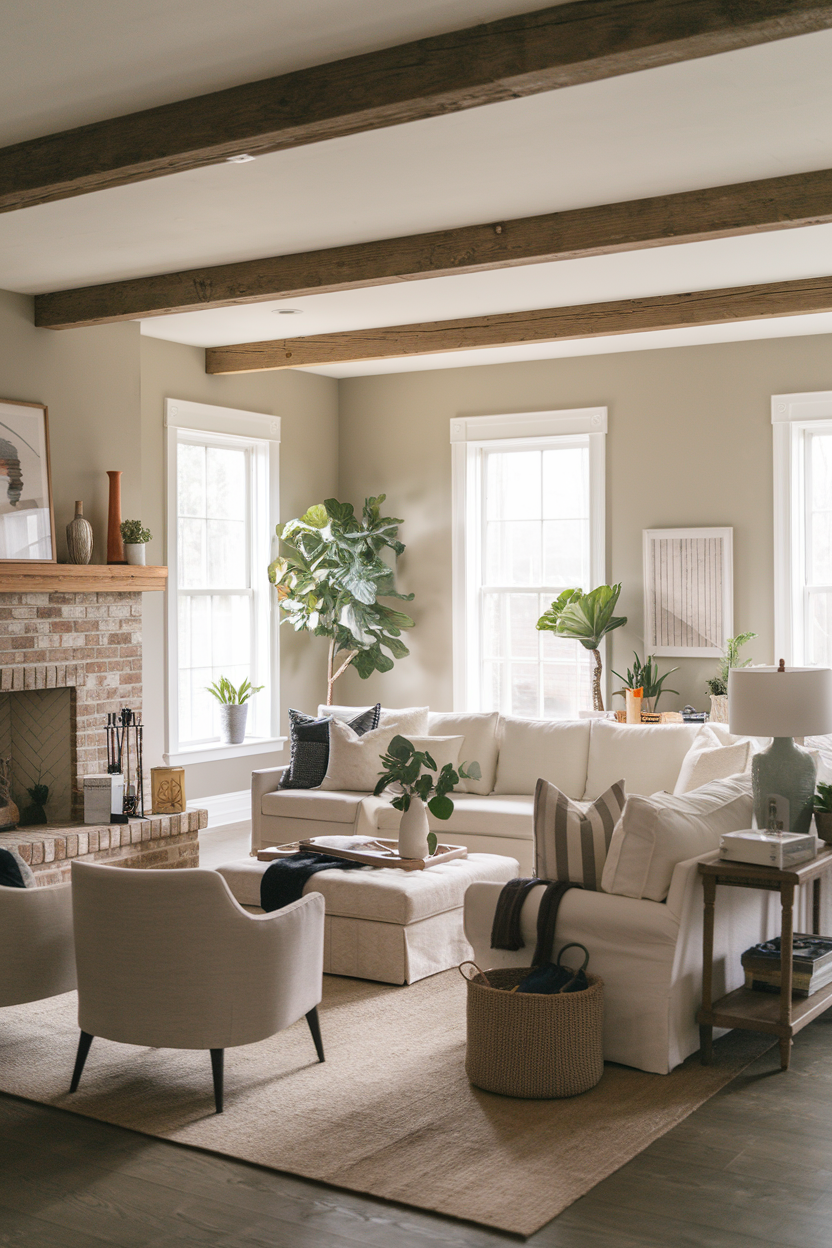
Furniture that sits low to the ground helps create a sense of calm and balance in a space. Low-profile sofas, platform beds, and floor cushions draw your gaze downward and encourage a slower, more grounded pace of living. These pieces often feel more in tune with the architecture of the home, especially when surrounded by neutral tones and natural textures. It’s a subtle shift that makes a big impact, lowering the physical and emotional center of gravity of the room.
11. Bring the Outdoors In
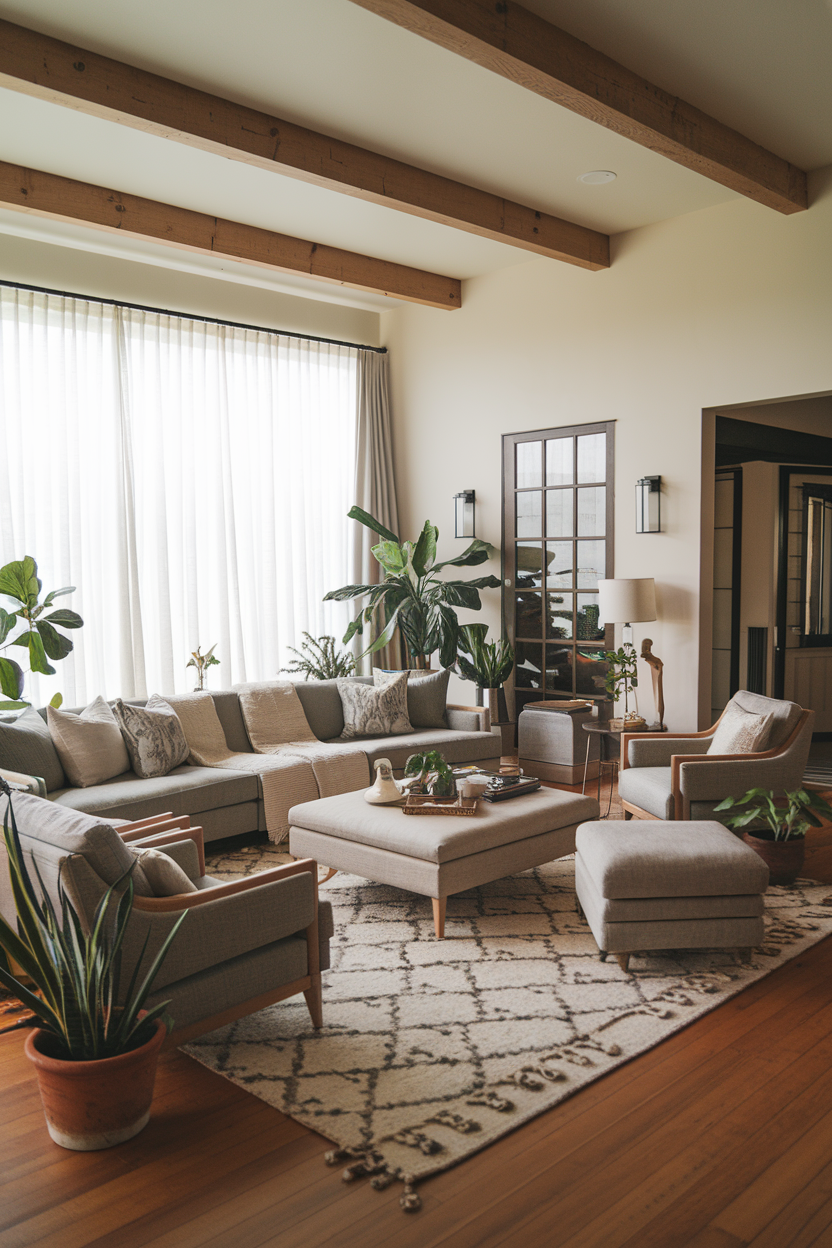
No modern organic space feels complete without the presence of greenery. But this isn’t just about tossing a plant in the corner, it’s about curating your indoor landscape with intention. Opt for leafy trees like olive or fiddle leaf figs, or go for sculptural varieties like rubber plants and monstera for dramatic flair. Even small clusters of potted herbs in clay vessels can bring vitality to a kitchen. Plants soften angular furniture, add movement, and introduce natural color variations. Plus, they improve air quality and bring seasonal changes into your daily experience, rooting your space in nature’s rhythm.
12. Use Curved Lines
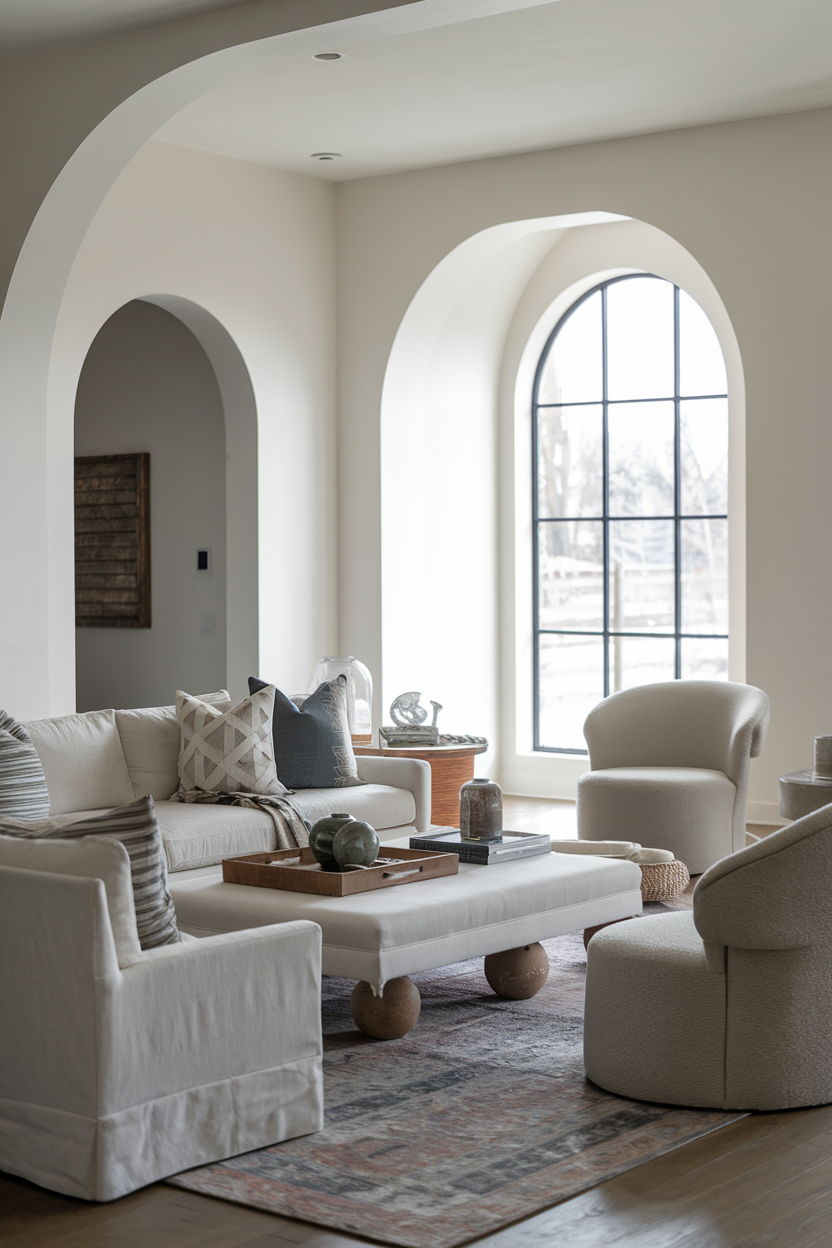
Many modern homes feature clean, angular lines, which can sometimes feel stark or rigid. Organic decor counters this by introducing curved shapes and rounded edges. Think arched doorways, circular mirrors, sculptural light fixtures, or curved-back chairs. These elements add fluidity and calm to the space, mimicking the natural lines found in nature, like river stones, rolling hills, or flowing water. Even a softly curved sofa or an oval coffee table can dramatically change the atmosphere, making the room feel more nurturing and relaxed.
13. Display Woven Baskets
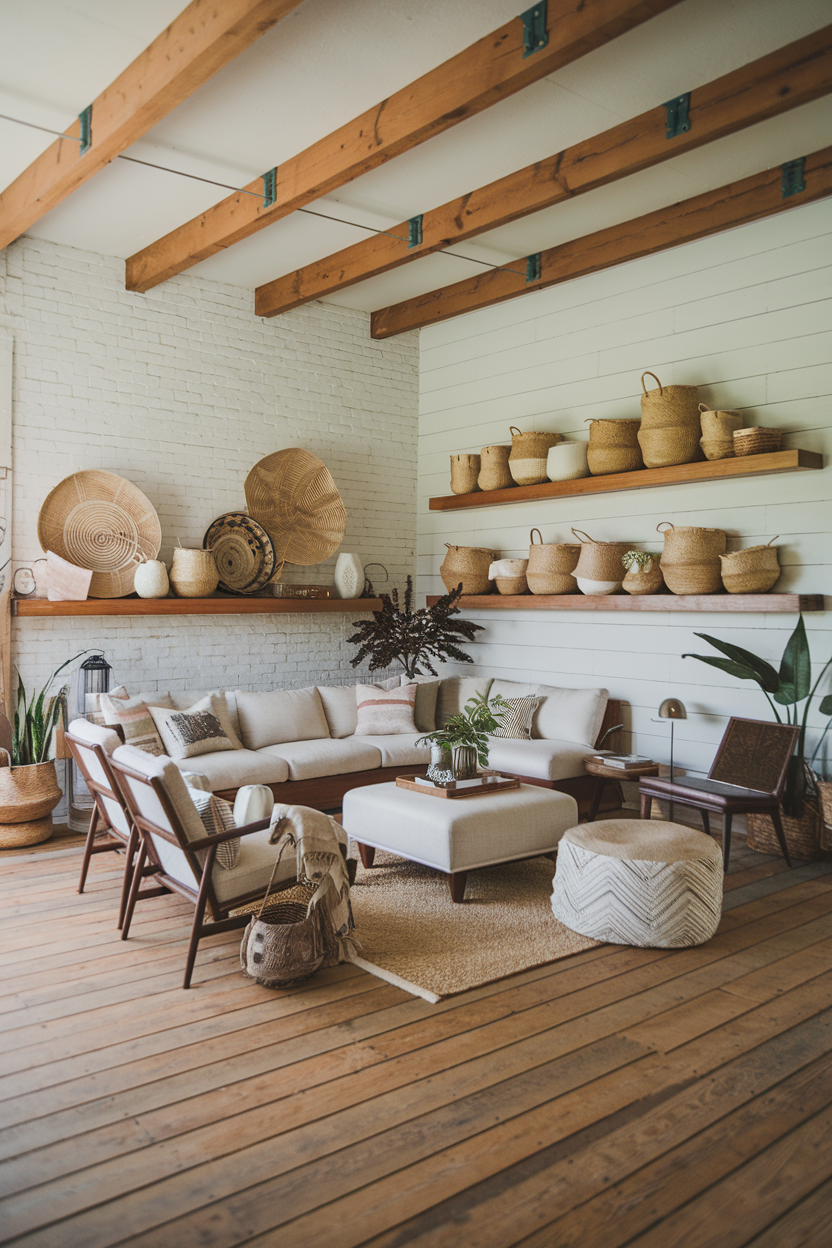
Woven baskets are a practical and beautiful addition to any room. Whether made from rattan, seagrass, bamboo, or jute, their tactile quality adds warmth and texture while offering smart storage. Use them to hide clutter, organize throws, store toys, or even hold plants. Choose a variety of sizes and shapes, and don’t be afraid to let them be seen, displayed on open shelves, under console tables, or in corners, they become sculptural elements in the design. Their handcrafted feel perfectly complements the artisanal spirit of modern organic style.
14. Mix Smooth and Rough Textures

A well-balanced room engages all your senses. In modern organic design, the contrast between smooth and rough textures helps create that balance. Think of a velvety sofa against a rustic wooden wall, a leather armchair next to a handwoven rug, or polished marble paired with a reclaimed wood shelf. These juxtapositions create a dynamic, layered environment that doesn’t feel over-styled or cold. Instead, it feels curated, sensory-rich, and alive with character. The more you blend these textures, the more nuanced and grounded your space will feel.
15. Use Reclaimed or Salvaged Materials
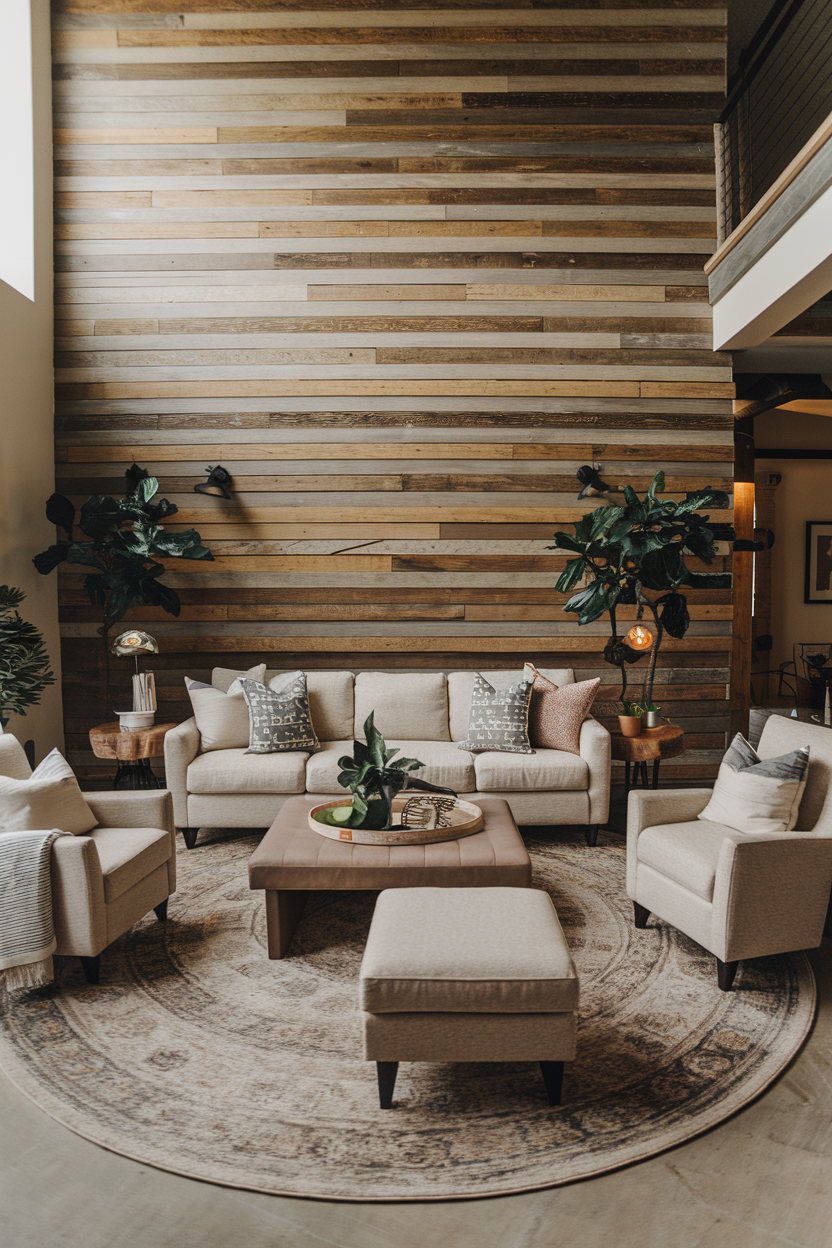
Designing with reclaimed materials isn’t just eco-conscious. It’s emotionally rich. Every knot in a reclaimed wood table or chiseled edge in an old stone mantel has a story. Incorporating these pieces brings depth and soul into your space, offering a contrast to sleek, new surfaces. Picture antique wooden doors used as sliding panels, or a salvaged marble slab becoming the top of a kitchen island. These one-of-a-kind elements bridge past and present, creating a timeless space that honors craftsmanship, sustainability, and storytelling.
16. Layered Lighting
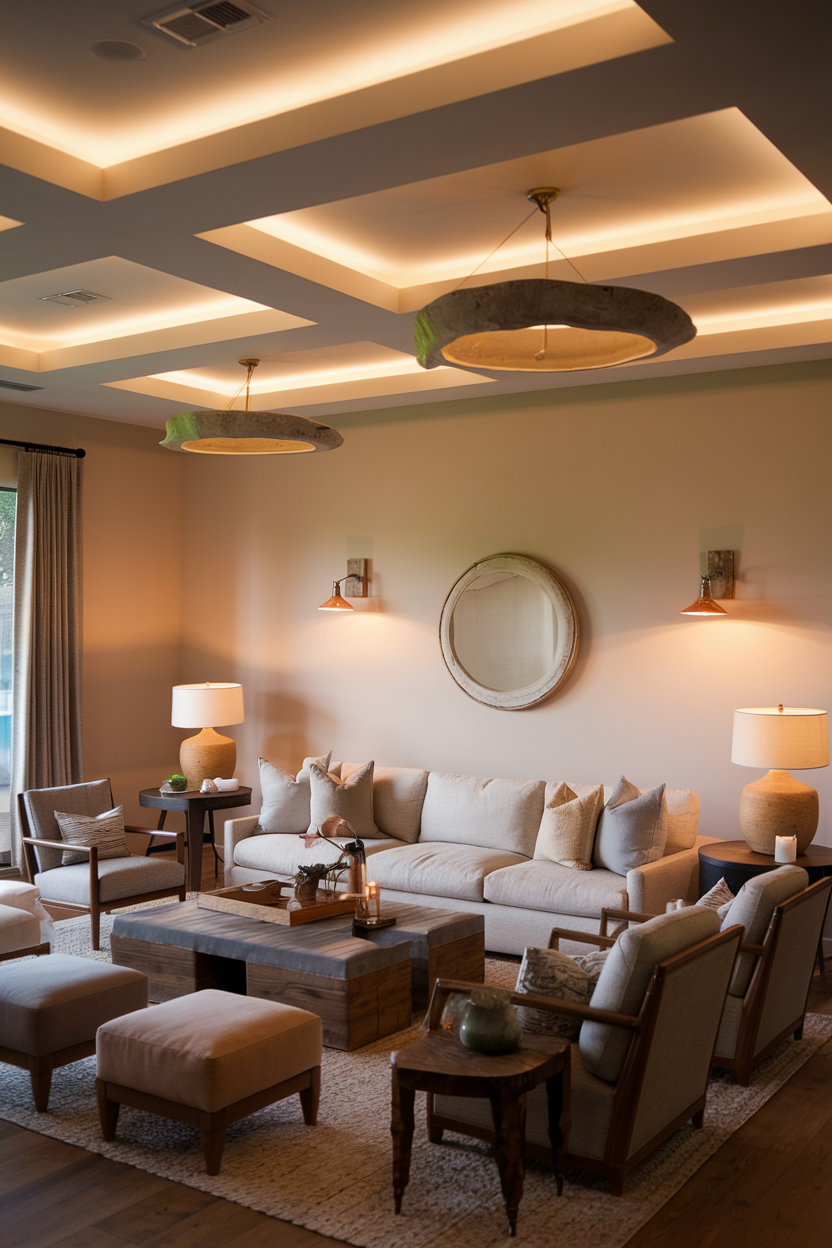
Lighting sets the tone in any room, and in organic spaces, it’s all about softness and subtlety. Create layers using different types of light, ambient ceiling lights, warm-toned table lamps, soft wall sconces, and even candlelight for an extra touch of intimacy. Choose light fixtures crafted from organic materials like linen, wood, rattan, or hand-thrown ceramic to enhance the natural mood. This layered approach not only creates a more flattering and adaptable lightscape but also contributes to the room’s visual richness, encouraging relaxation and slow living.
17. Keep Decor Minimal
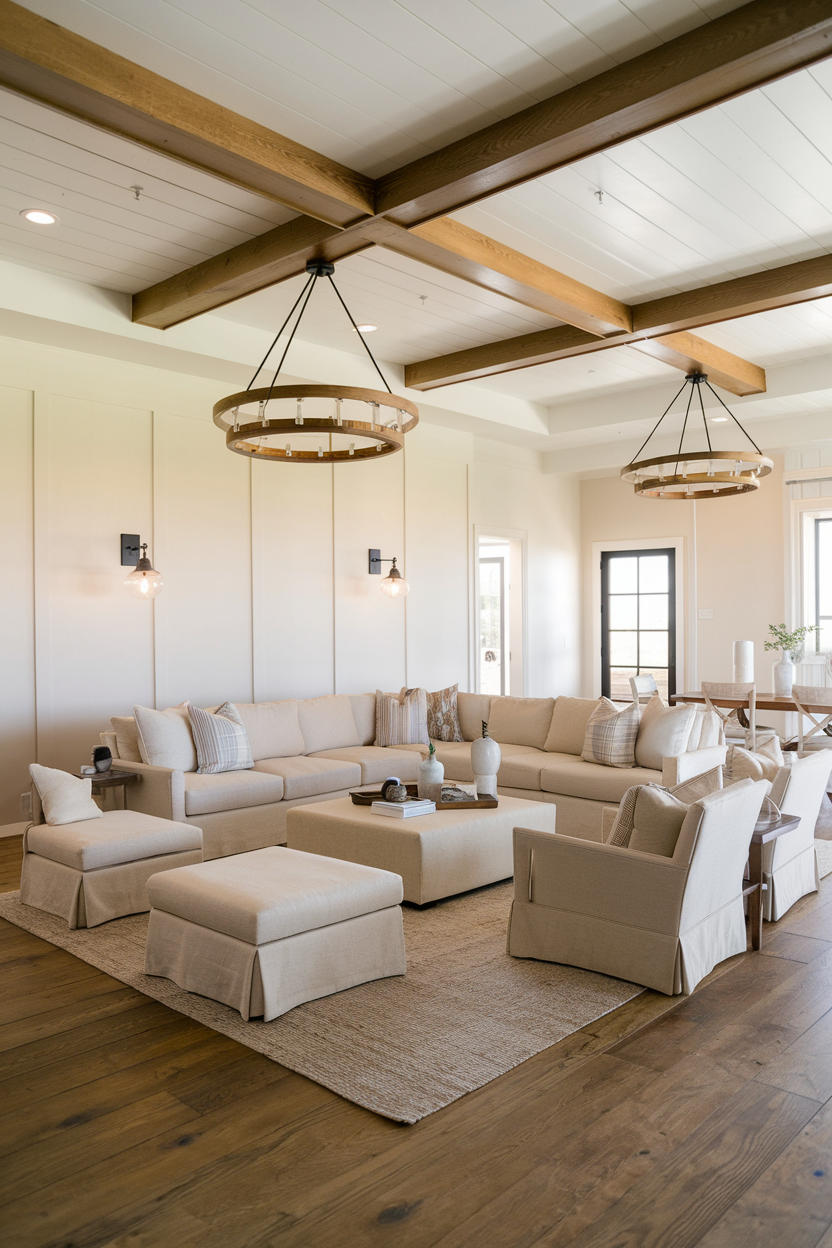
A modern organic home doesn’t demand shelves full of decor. It calls for simplicity with significance. Every item should feel purposeful, whether it’s a vintage vase from your travels, a hand-carved bowl from a local artisan, or a stack of linen-bound books. The goal is to create visual breathing room while allowing the objects you love to shine. Edit thoughtfully, leaving space between items so each piece has a chance to tell its story. This restraint fosters calm and draws attention to texture, materiality, and form.
18. Incorporate Wabi-Sabi Principles
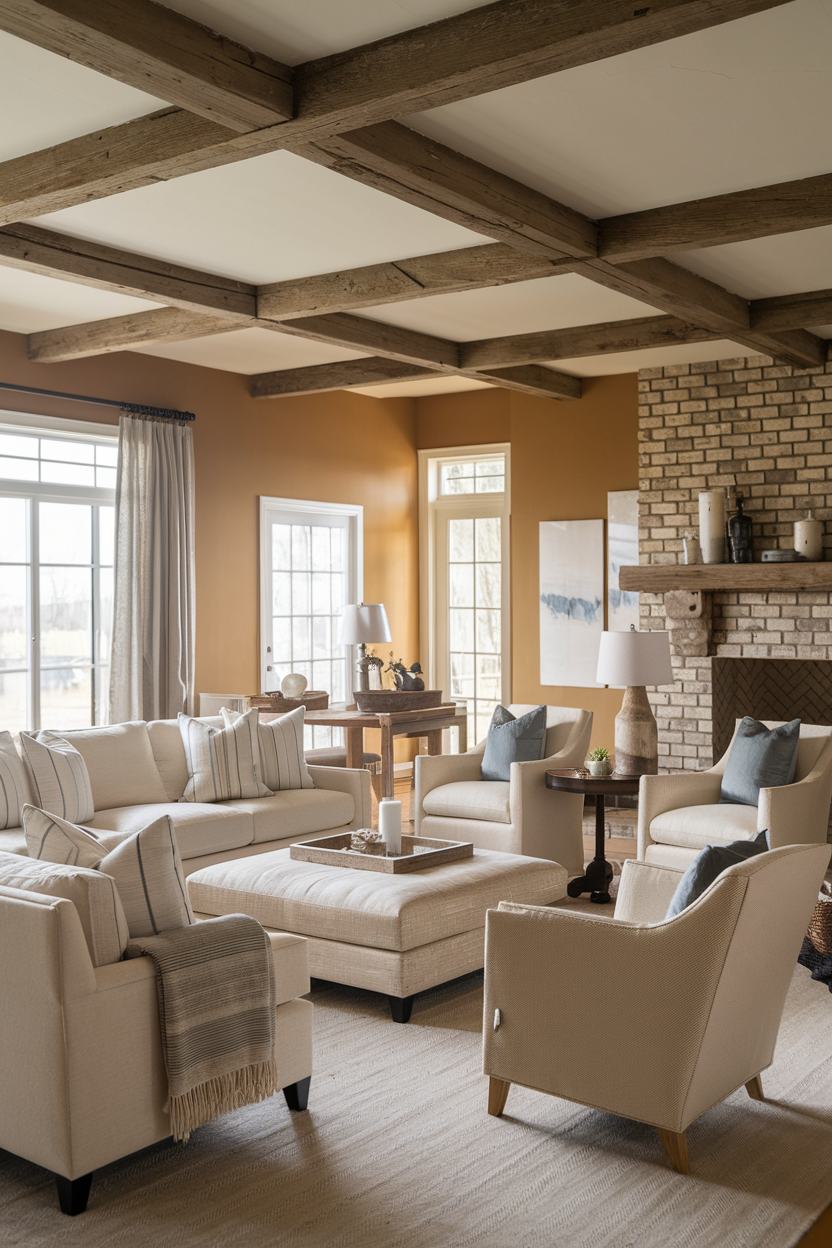
Wabi-sabi is the Japanese philosophy of embracing imperfection, impermanence, and simplicity, ideals that blend beautifully with the modern organic aesthetic. In practice, this might mean keeping a cracked ceramic bowl on display, choosing handmade tiles with irregular edges, or allowing wood to age naturally. It’s about celebrating the charm of things that are worn, weathered, and quietly beautiful in their authenticity. A wabi-sabi influence turns your home into a space that feels honest, lived-in, and effortlessly serene.
19. Celebrate Open Space and Negative Space

Modern organic interiors thrive when they’re not overcrowded. Allow your space to breathe by celebrating negative space. The open areas between furniture and decor. This doesn’t mean your home should feel empty, but rather intentional. A single bench along a wall, a cluster of objects on an otherwise bare table, or a few thoughtfully hung frames on a large wall all allow the eye to rest. This spatial awareness emphasizes what’s present while also giving your home a gallery-like calm that feels effortlessly curated and elegant.
20. Decorate With Dried Botanicals

While fresh flowers are lovely, dried botanicals and bare branches offer a sculptural, long-lasting alternative that perfectly suits the modern organic mood. Think tall pampas grass in a ceramic vase, a bunch of dried eucalyptus on the mantle, or a twisted branch in a minimal glass vessel. These natural accents bring the outside in, echoing seasonal change and adding soft, earthy tones and textures. They don’t require maintenance and often last for months, if not longer, making them a beautiful, low-effort way to infuse your space with nature.
21. Introduce Organic Shaped Mirrors

Mirrors are functional, but in modern organic design, they also serve as sculptural elements that echo the gentle, irregular forms found in nature. Instead of standard square or rectangular mirrors, consider ones with asymmetrical, fluid shapes, like puddle mirrors or arched designs. These create a soft visual rhythm, breaking up hard lines and adding movement to walls. Placed strategically, they also reflect natural light and greenery, expanding the sense of space while reinforcing a connection to the outdoors.
22. Use Earthy, Pigmented Plasters
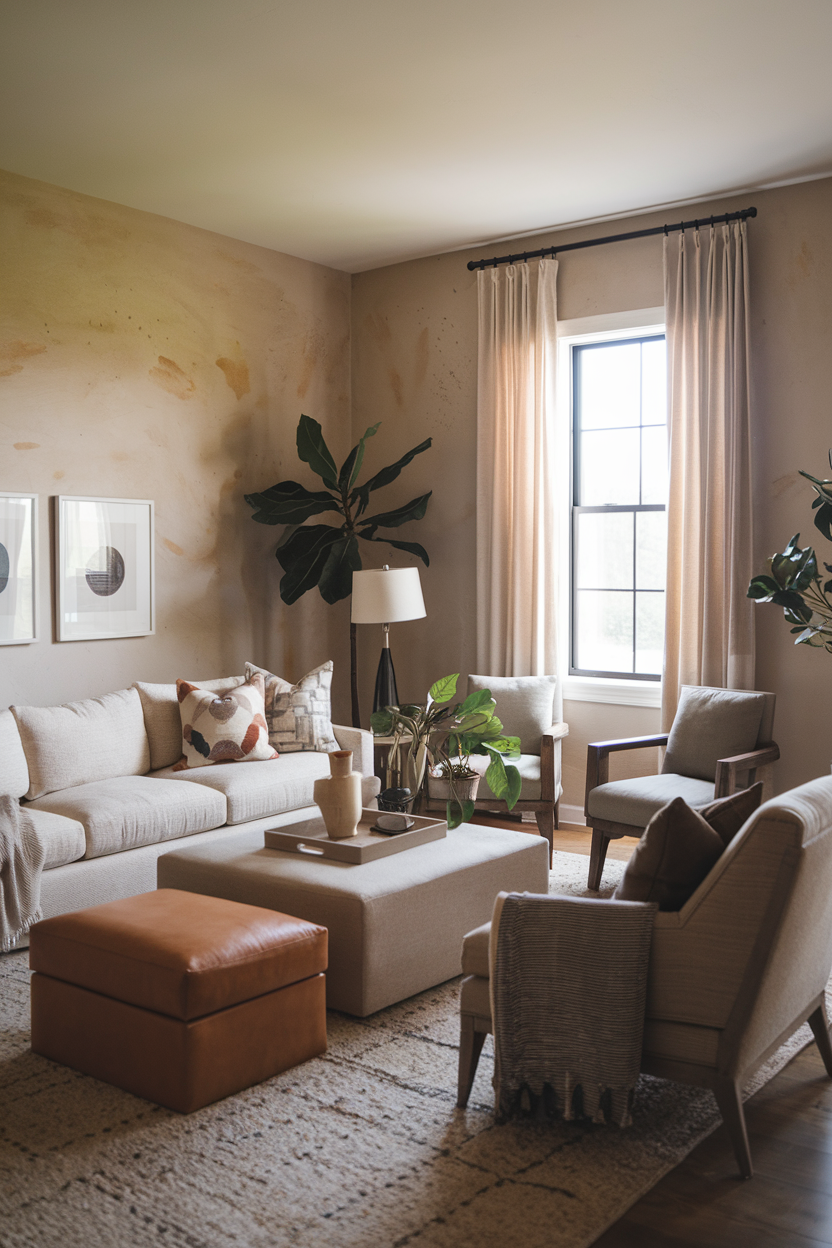
Limewash and natural clay plasters have made a major comeback in modern organic interiors. These breathable, VOC-free wall finishes create a velvety, textured effect that shifts in tone depending on the light. Whether you choose warm taupe, terracotta, sandstone, or misty gray, the subtle color variations and imperfect strokes make the walls feel alive and deeply rooted. Unlike flat paint, these finishes bring a handcrafted element into your space, giving every room a sense of quiet luxury and artisanal depth.
23. Statement Wooden Furniture
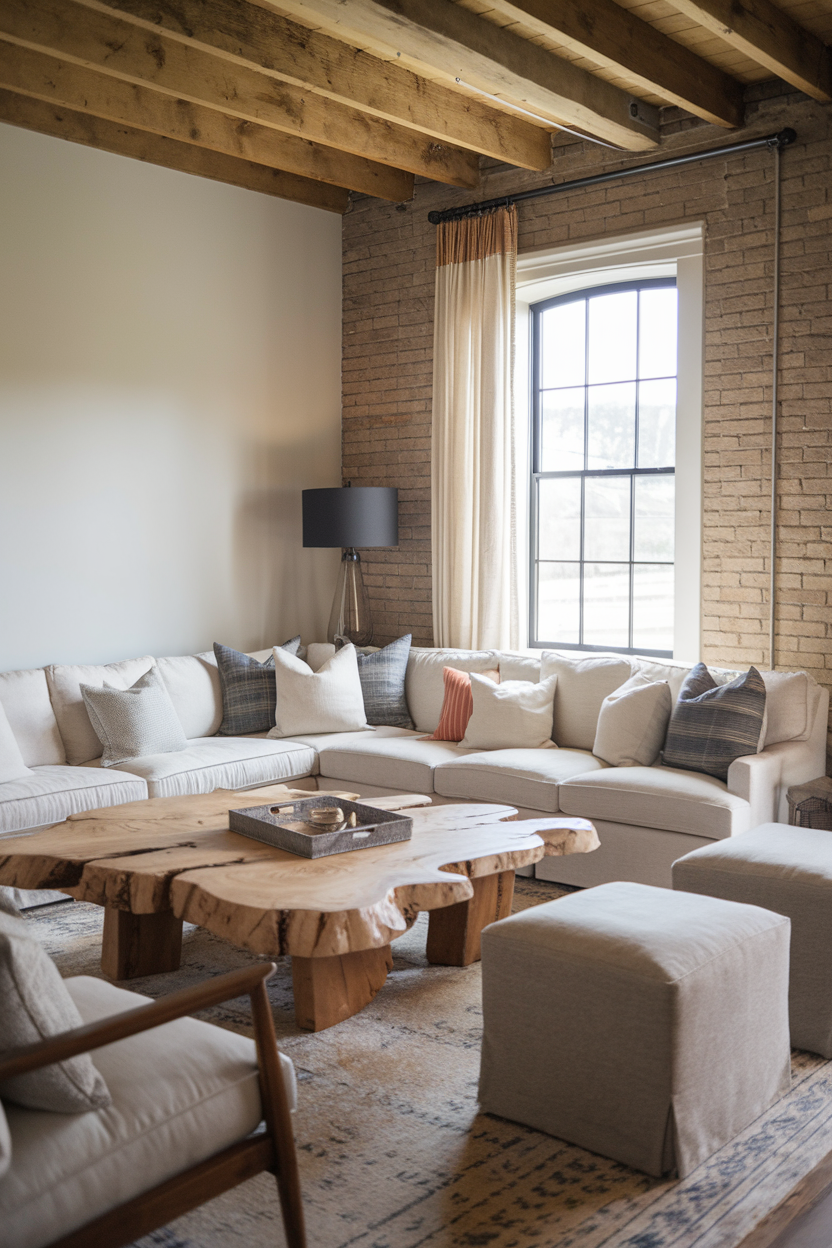
Nothing grounds a room quite like a bold piece of wooden furniture. Think oversized dining tables made of solid oak, chunky stools, or organic coffee tables carved from a single slab. Look for visible knots, raw edges, and uneven finishes that highlight the natural life of the tree. These statement pieces act like visual anchors, bringing structure and warmth while showcasing the beauty of craftsmanship and unrefined material. They help balance more minimal or modern touches with something earthy and grounding.
24. Incorporate Natural Linen Textiles
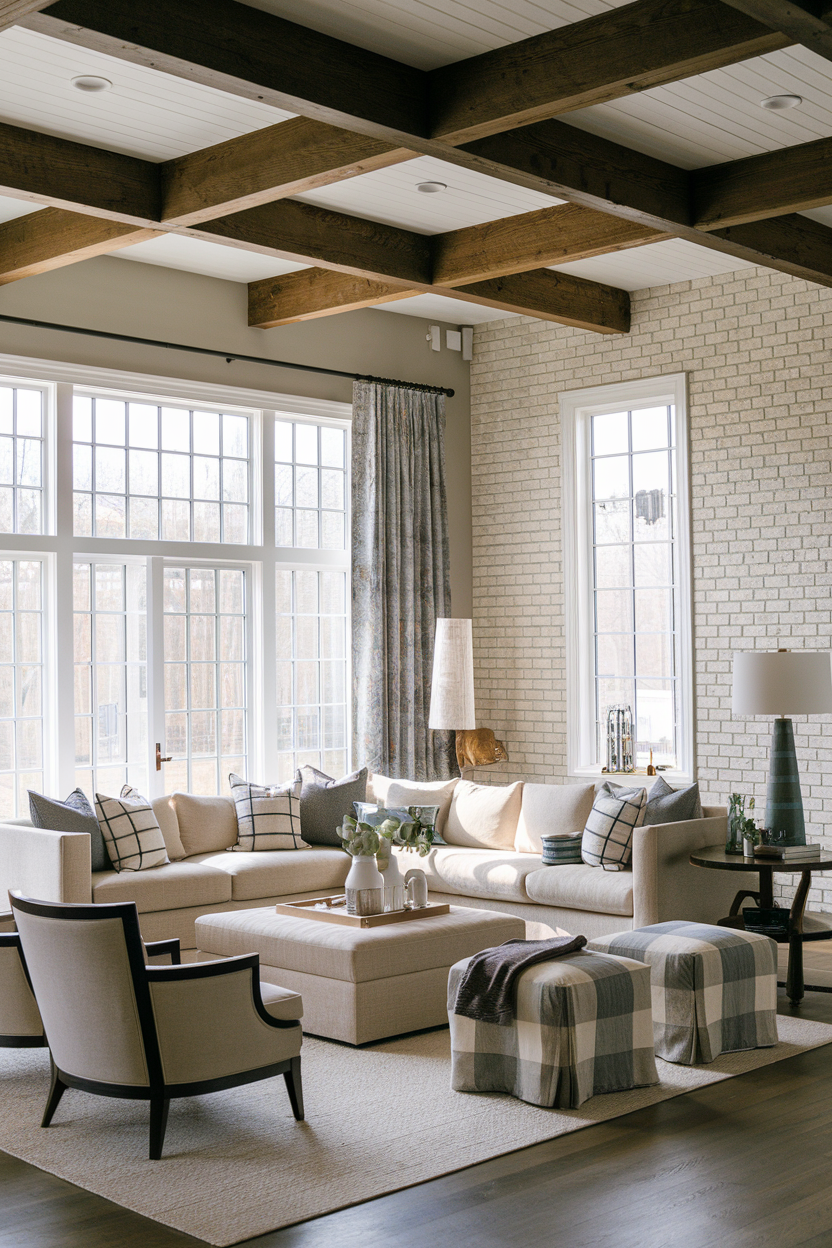
Linen is a cornerstone of modern organic decor, prized for its breathability, tactile softness, and effortlessly elegant drape. Use it across bed linens, curtains, napkins, or slipcovers to create a laid-back yet refined atmosphere. Choose undyed or naturally dyed options in soft earth tones (sand, stone, clay, moss) to enhance the soothing, nature-inspired palette. Over time, linen gets softer and gains a beautifully relaxed texture, embodying the organic design principle of embracing material evolution and lived-in charm.
25. Display Handmade Ceramics
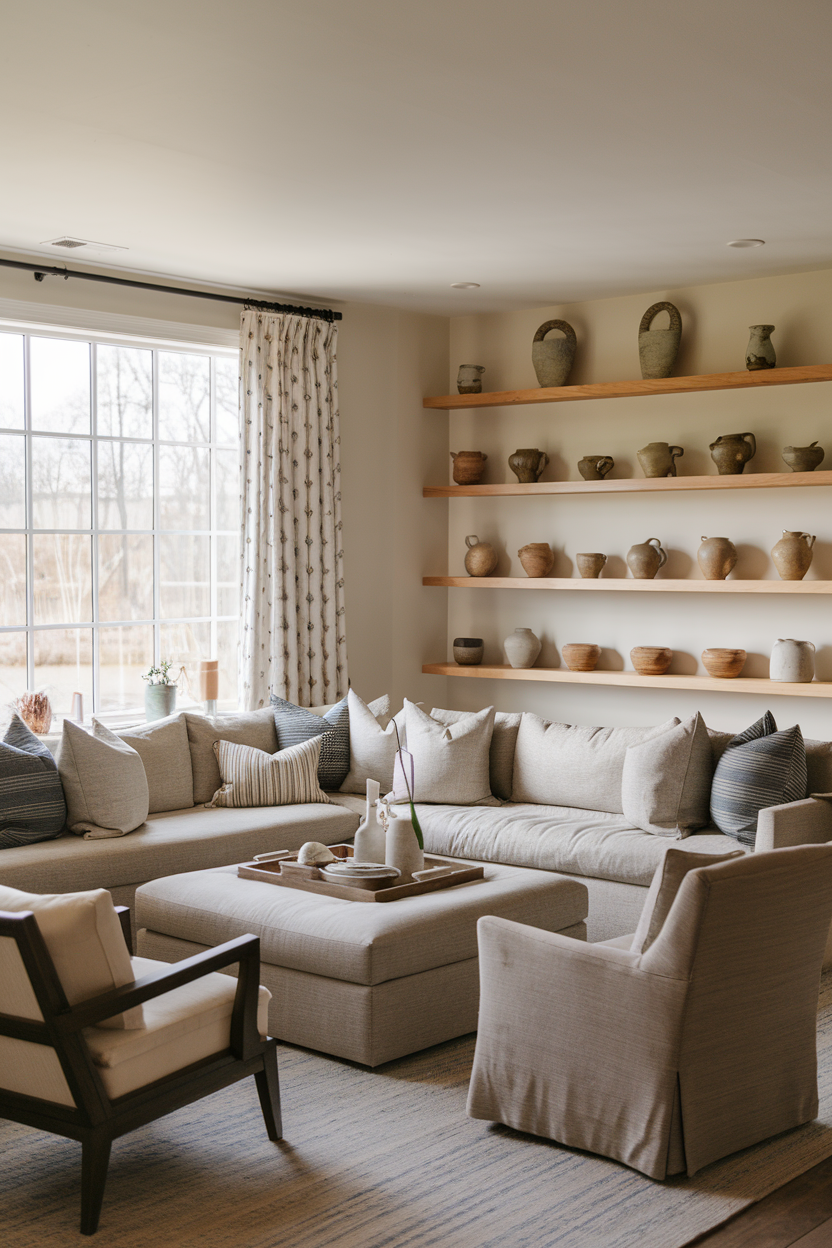
There’s something deeply grounding about holding a mug with an uneven rim or seeing the thumbprint of a maker on a clay bowl. Handmade ceramics are not just functional; they’re art pieces that bring soulful character into everyday rituals. Display them openly on open shelving or dining tables, whether it’s a simple white vase with a crackle glaze or a speckled mug with an organic silhouette. Their subtle irregularities, muted glazes, and earthy textures reinforce the handcrafted, grounded feel that defines modern organic style.
26. Choose Sculptural Lighting

Lighting in a modern organic space should do more than illuminate, it should mimic natural forms and materials. Think lamps with pebble-like ceramic bases, pendants made from woven fibers or rice paper, or chandeliers resembling tree branches or seashells. These sculptural lights double as art pieces, casting soft, diffused light that evokes the glow of early morning or late afternoon sun. Their forms and finishes celebrate imperfection, texture, and movement, bringing in that calming, nature-inspired touch even after the sun sets.
27. Install Natural Wood Beams

Exposed wood beams are a striking way to introduce organic architecture into a space. Whether structural or purely decorative, they bring in a raw, rustic character that softens clean-lined ceilings and adds visual interest overhead. Opt for unfinished or lightly treated beams to preserve the wood’s natural grain and patina. When paired with soft lighting or pale wall colors, the contrast adds richness without overwhelming the space. It’s a powerful way to blend structure with soul.
28. Incorporate Artisan Wall Hangings and Fiber Art
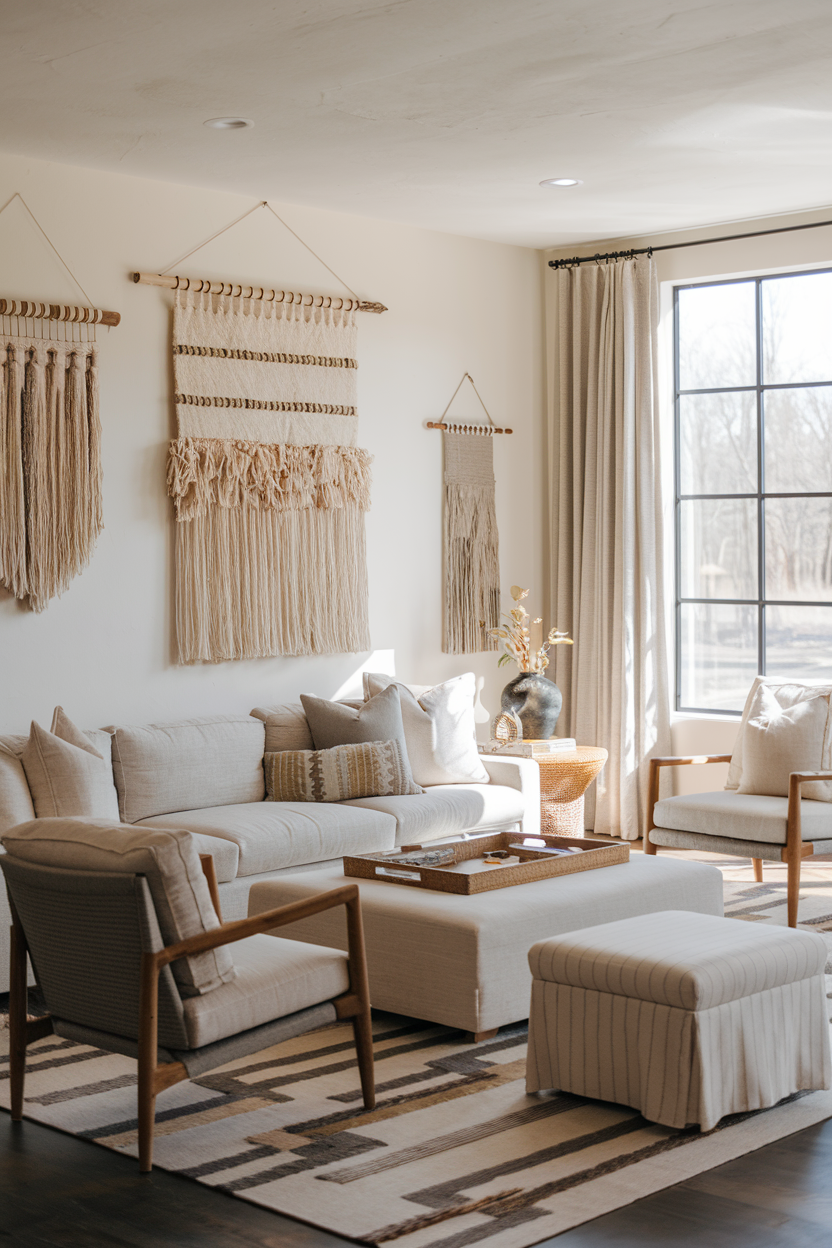
Handwoven wall hangings, macramé pieces, or wool tapestries bring both texture and artistry to the vertical surfaces of your home. These items introduce softness and subtle color, acting as organic alternatives to traditional framed art. Choose natural materials like cotton, wool, or jute, and look for pieces that celebrate irregular forms or hand-dyed hues. Fiber art has a deeply rooted, ancestral quality, it’s tactile, expressive, and grounding, evoking warmth and comfort while connecting your space to time-honored traditions.
29. Add Visual Layers
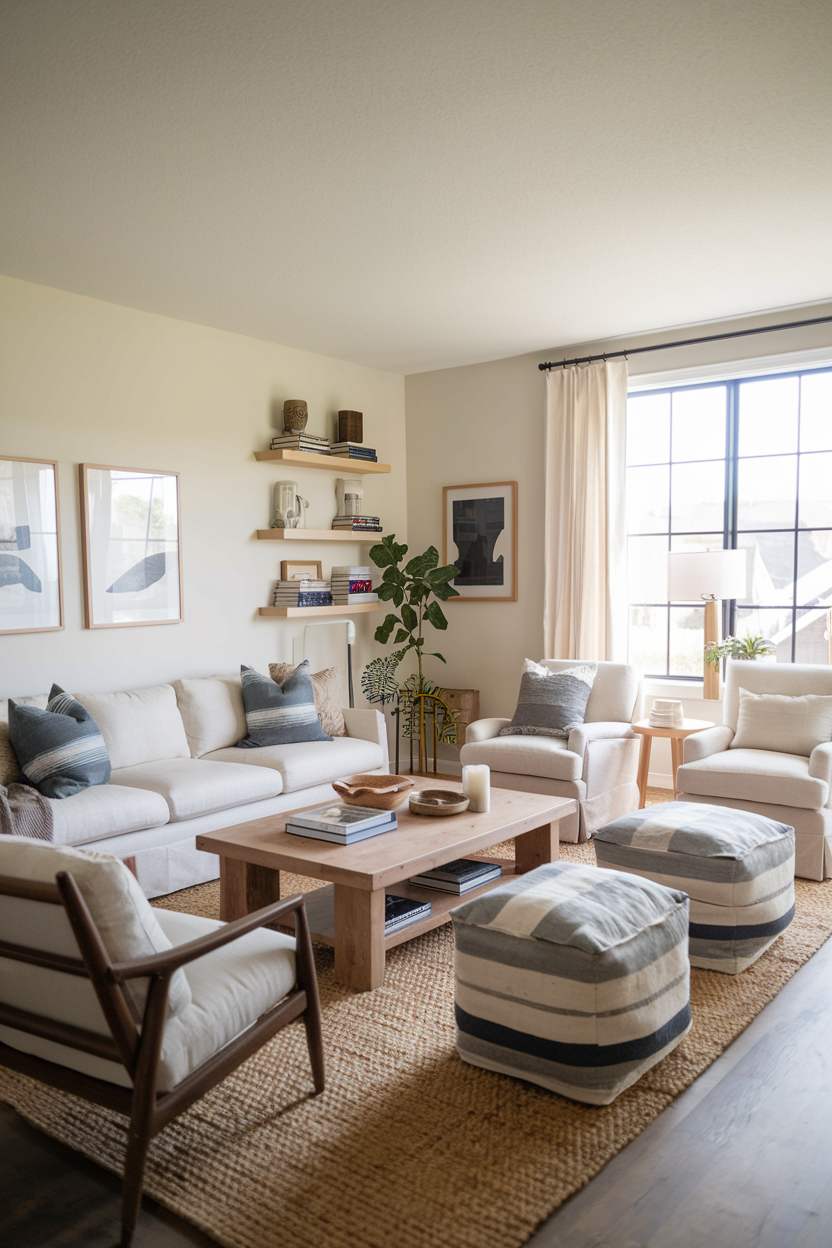
Layering a room with natural fiber rugs is an easy way to add warmth, texture, and comfort underfoot. Jute, wool, sisal, and hemp rugs bring tactile variation and earthy tones, while their rougher textures contrast beautifully against smooth floors or soft upholstery. For extra coziness, consider layering a wool or cotton rug over a flat jute base. The result is a nuanced floor treatment that feels inviting, grounded, and visually rich, ideal for tying together a neutral, organic color palette.
* The modern organic interiors you’ve just explored blend clean lines and natural elements to create a space that feels both fresh and grounding. Stay inspired as you continue designing spaces that reflect your love for comfort, simplicity, and timeless charm.
